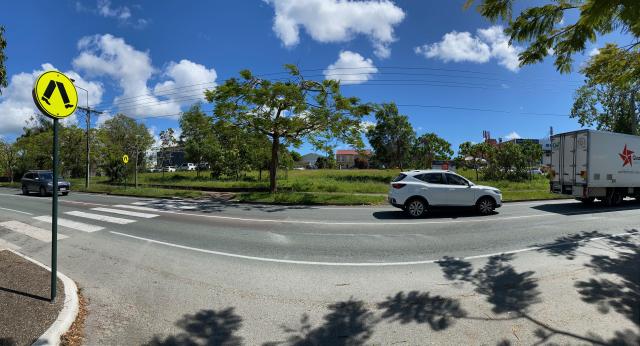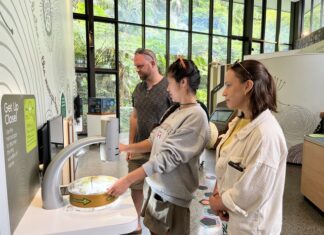
Council will consider development and rates concessions, partner with community housing providers and allow four-storey construction in district centres such as Noosa Junction and Tewantin, relaxing the three-storey limit, for the creation of social and affordable housing under its new Housing Strategy.
Under the strategy, adopted at a special meeting last Friday, councillors say they have taken a significant step toward meeting the shire’s social and affordable housing needs.
The strategy aims to support a vision for an inclusive Noosa community where everybody has access to safe, secure housing they can afford.
Released along with the housing strategy was a summary report prepared by consultants, Articulous, and details of community consultation on the Draft Housing Strategy which took place earlier this year in July-August.
Mayor Clare Stewart said the strategy responds to the growing community need for greater housing choice.
“Affordably priced housing plays a critical role in the health and wellbeing of people and their families, and social housing provides an important safety net for the community,” she said.
“This council is proactively addressing the worsening housing crisis and the strategy provides a clear direction of what steps are within our power to ensure people have access to safe housing.
“Right now there are 140 members of the community living rough, 15 with children. Workers can’t get accommodation. Businesses can’t find staff. They have no where to live. People are looking for accommodation. They’re being forced out of rentals.”
Fundamental to the strategy’s success is strong partnerships with the State Government, Community Housing providers, private housing developers and on-going dialogue with the local community.
During the consultation on the draft strategy, 84 per cent of respondents were supportive of affordable and social housing in Noosa and 72 per cent supported council involvement in the process of securing it.
There was also strong support for residential development and redevelopment, in appropriate areas, to facilitate housing that is affordable for households on low to moderate incomes.
And survey respondents also supported the idea that Council should consider subsidising the delivery of more affordable housing through reduction or waiving of fees, charges or rates.
“We need to work with all stakeholders, existing property owners and levels of government to keep pace with growing demand for social and affordable housing,” Cr Stewart said.
The Housing Strategy identifies planning scheme amendments to allow further small dwellings and housing choice within larger centres.
“It reinforces a recent change by the State Government to allow secondary dwellings (such as granny flats) to be rented to people outside of the household.”
“What we’re doing is looking at what the community told us to address as the most pressing issue in our shire,” Cr Brian Stockwell said at Friday’s meeting.
There were concerns raised during consultation that the provision of additional housing should not be at the expense of other values such as other protection of open space and conservation land, low scale / low rise-built form character, nor should it lead to congestion and overpopulation.
Cr Stockwell said the building of more houses at the loss of green space was “unacceptable”. We’re not sprawling. We’re trying to ensure more housing within walking distance of schools, public transport, service centres, discouraging the use of vehicles, he said.
Cr Stewart said the strategy continues to protect the character and cultural values of the community, while integrating new affordable and social housing within the community.
There was strong community sentiment that the existing housing stock should be used to house residents rather than be used to accommodate visitors or be locked up for the occasional use by absent owners as holiday homes.
The Housing Strategy highlights the need for ongoing monitoring of short-term accommodation in the shire and flagged further amendments to planning policy and compliance if it continued to limit permanent housing opportunities.
Council figures determined there were more than 5200 self-contained dwellings used or available for short-term visitor accommodation.
On Census night last year, Noosa had 4810 unoccupied private dwellings which didn’t include motels or resort.
Mayor Stewart plans to write to vacant and short term let property owners, asking them to consider renting out their properties to locals amid the deepening housing crisis.
“By writing to these property owners, we’re acknowledging that this crisis can’t be addressed in isolation and requires a community response,” she said.
“This is a social disaster that impacts everyone in Noosa because business owners and social services are unable to fill vacancies, which affects everything from your morning coffee to provision of health services.”
Further community concerns were raised about more housing taking the population above the region’s carrying capacity or population cap.
Cr Stockwell said the last Census reported 21,000 houses in Noose with two-thirds of them one or two person households. He said the carrying capacity that was calculated in the 1990s had not taken such low household rates into account.
Cr Joe Jurisevic said the carrying capacity had been calculated in the 1990s at 65,000 people so Noosa’s current population of 56,800 provided scope for growth.
Cr Stewart said the Housing Strategy included regular monitoring and review to ensure any actions implemented were successful in meeting the strategy’s objective to enable housing choice, diversity and affordability to meet the current and future needs of the community.
“We’re not there yet but this is one step closer to addressing community needs. The community told us they want action. This provides tangible outcomes and action,” she said.






